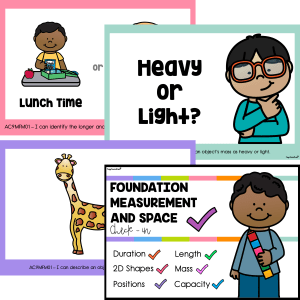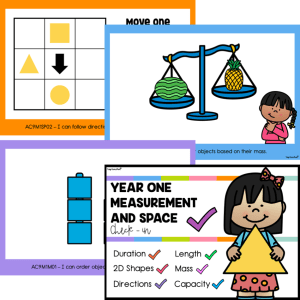Measuring Hand Spans

Description
Turn your students’ hands into a personal measuring tool with this fun and engaging activity! The Measuring Hand Spans activity encourages students to develop an understanding of informal measurement through hands-on exploration of length. With just a simple tracing of their hand, students can begin comparing and recording lengths in a meaningful, tangible way.
This resource allows students to use their own hand spans to determine whether objects are shorter, the same length or longer. By starting with a familiar and personal benchmark - their hand - students build their conceptual understanding of length and comparison. It’s an excellent introduction to measurement for younger students, or a useful consolidation activity for those needing extra practice with informal units.
Designed to be easy to implement and requiring minimal preparation, this task provides opportunities for discussion, reasoning, and vocabulary development as students work independently or collaboratively to find and record items that fit each category. The process of estimating, checking and recording helps reinforce accurate comparison and lays the groundwork for more formal measurement lessons.
Key Learning Outcomes
- ✅ Use informal units to measure and compare lengths
- ✅ Develop language to describe length: shorter, same length, longer
- ✅ Strengthen estimation and reasoning skills through hands-on activity
- ✅ Record observations using a simple, structured format
What’s Included
- 1 printable worksheet for recording comparisons
- Space to draw or write items that are:
- Shorter than the student’s hand span
- The same length as the student’s hand span
- Longer than the student’s hand span
- Clear instructions to guide independent work
Materials Needed
- Printed worksheet (one per student)
- Pencils for tracing and recording
- Classroom objects to explore and compare (e.g. glue sticks, pencils, blocks, scissors)
- Optional: clipboards for movement around the room
How to Use
- Have each student trace one of their hands onto the worksheet or a piece of paper.
- Explain and model how to compare the hand span to different objects around the room.
- Students search for items that are shorter than, the same length as, or longer than their hand span.
- They draw or write the names of these items in the correct sections on the worksheet.
- Review as a class, encouraging students to share and justify their comparisons using measurement language.
Ideas for Classroom Use
- 💡 Use as part of a Maths rotation focused on length or informal measurement
- 💡 Turn it into a scavenger hunt where students race to find one item for each category
- 💡 Follow up with a reflection prompt: “What was the most surprising item you measured today?”
- 💡 Create a class chart to tally how many items fell into each comparison category
Top Teacher Tips
- 💛 Model a few examples beforehand to support learners who are new to comparing length
- 💛 Encourage discussion in pairs to reinforce vocabulary like "longer than" and "shorter than"
- 💛 Laminate a few worksheets and use dry-erase markers for repeated practice
- 💛 For an extension task, ask students to compare hand spans with a partner and graph the results
The Measuring Hand Spans activity is a fun and personal way to introduce measurement concepts through informal units. By using their own hands as the measuring tool, students engage deeply in practical comparison and develop foundational measurement understanding through exploration and reflection.
Additional information
| Australian Curriculum Code | AC9M1M01, AC9MFM01 |
|---|---|
| File Format |
Australian Curriculum V9
F - 6
Lorem ipsum dolor sit amet, consectetur adipiscing elit.
Lorem ipsum dolor sit amet, consectetur adipiscing elit.
Lorem ipsum/ Lorem ipsum/ Lorem ipsum
Lorem ipsum dolor sit amet, consectetur adipiscing elit.
Lorem ipsum dolor sit amet, consectetur adipiscing elit.
Lorem ipsum/ Lorem ipsum/ Lorem ipsum
Lorem ipsum dolor sit amet, consectetur adipiscing elit.
Lorem ipsum dolor sit amet, consectetur adipiscing elit.
Lorem ipsum/ Lorem ipsum/ Lorem ipsum
Lorem ipsum dolor sit amet, consectetur adipiscing elit.
Lorem ipsum dolor sit amet, consectetur adipiscing elit.
Lorem ipsum/ Lorem ipsum/ Lorem ipsum
Lorem ipsum dolor sit amet, consectetur adipiscing elit.
Lorem ipsum dolor sit amet, consectetur adipiscing elit.
Lorem ipsum/ Lorem ipsum/ Lorem ipsum





